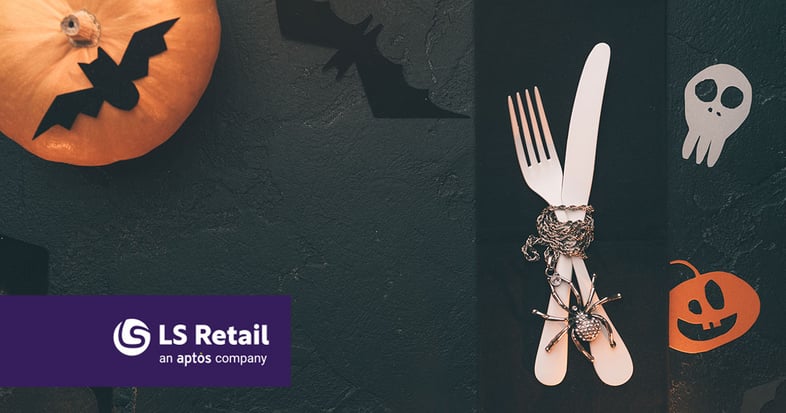Ghost kitchens: how they are transforming the restaurant industry

Cooking facilities that serve up food specifically for delivery orders are popping up in cities and towns all over the world. They’re known as ghost, dark or virtual kitchens, and they’re expected to turn into a US$1 trillion global market by 2030.
These delivery-only establishments with no dine-in areas began to emerge a few years ago, around the same time as food delivery apps like Deliveroo, Uber Eats and DoorDash took off. Restaurateurs realized that they only required a kitchen, or just part of one, to serve a whole new segment of mobile customers. There was no need to spend extra money on renting premium premises for dining in, hiring waiters or any of the other expenses that come with running a restaurant. They could simply set up a kitchen in any location, join a meal-delivery app and begin serving up food. The customers ordering pizzas or noodles for delivery may even have no clue that the restaurant they’re ordering from doesn’t physically exist.
Among the big names, fast food chain Burger King recently launched its first ghost kitchen in the UK, to respond to growth in demand for home delivery. Customers can get food delivered from the new location in North London just as before. The only difference is they can’t eat in, or pick up their order.
It’s a trend that is gathering pace. With more people than ever ordering meals to eat at home, and delivery services becoming faster and more convenient, ghost kitchens and the mobile delivery apps they live through are disrupting the very idea of what it means to run a restaurant.
What makes a ghost kitchen different from other restaurant concepts?
Takeaways existed long before smartphones and delivery apps. But ghost kitchens are taking the remote dining concept one step further. There is no storefront, no front-of-house staff, no waiting or seating area. So, unlike a restaurant, they can be located pretty much anywhere, so long as they’re accessible to couriers.
Deliveroo’s own ghost kitchen concept – ultra low-cost prefabricated structures called Rooboxes – can be found in derelict parking lots and warehouses. Then there are companies like Mission Kitchen, CloudKitchens and Kitchen United, which essentially offer up commercial kitchen spaces in densely populated areas ready for businesses to set up their own delivery-only restaurants.
In some cases, a single kitchen can serve as a hub for multiple virtual restaurants, with chefs cooking up multiple cuisines under the same roof. They’re used both by independent operators looking for a low-cost set up, and by large businesses that recognize the potential of this new business model.
Are ghost kitchens here to stay?
Ghost kitchens experienced exponential growth during the Covid-19 pandemic when people couldn’t go out to eat, yet still craved restaurant-quality food. But the market had been gaining traction for years before, and it continues to show huge potential.
As demand for delivery continues to grow, ghost kitchens could be an ideal solution for established restaurants, as they would allow them to maintain their dine-in experience while accommodating new delivery services. It would mean freeing the restaurant lobby from couriers, helping the indoor-dining atmosphere. It would also simplify operations, as running a hybrid model with both eat-in and takeout can be challenging in terms of maintaining quality of service and speed.
Ghost kitchens, then, are proving to be a cost-effective way of catering to new generations of customers. For a fraction of the cost of running a traditional restaurant, businesses can get their food out there, and perhaps even reach new generations of consumers.
For newcomers, ghost kitchens could also be an ideal stepping stone into the industry, as they require lower capital investments.
As ghost kitchens become more common, we can expect operators to bring in advanced restaurant automation to draw even more benefits. According to Michael Schaefer, Global Food and Beverage Lead at Euromonitor, in the next five to ten years we can expect ghost kitchens to fully automate production of menu items to increase speed of service and cut production costs.
How to make a ghost kitchen work for your business
According to Uber Eats, its restaurant partners that set up ghost kitchens who can increase sales by 50%. Deliveroo is so sure about ghost kitchens that it’s launching even more of its own internationally. So how can you get in on the action, and make sure you get a return on your investment?
- Use data to build a plan. Investigate demand and find gaps in the market, or if you already run an F&B operation use your own restaurant analytics, to understand typical consumer behavior and possible untapped opportunities in terms of what areas you should target, what type of menu you should offer, and what third-party operators would be the most suitable for you. Set up commercial kitchen spaces in areas close to where you have the most delivery traffic. This will save on delivery distance, and allow you to get out more food to the customers that want it. Is there high demand? Calculate your average meal preparation time and throughput to determine if you might need more than one kitchen. It may be less costly than losing customers because of lengthy delivery times due to a constant backlog of orders.
- Offer a menu that holds up while being transported. Every dish you offer in your ghost kitchen must taste as good as the ones being served up in your physical restaurants. This means you need to find ways to transport your food so it stays warm, but doesn’t become soggy. To keep the quality up to your standards, you may also need to embed people from the original restaurant – the ones who know your food, the way it should be prepared and how it should be presented – into each new ghost kitchen.
- Get the right IT infrastructure. To guarantee an error-free and quick service, you need technology that can integrate with third-party delivery operators, and enable you to track the source and timing of order. You will also need to send incoming orders straight to the kitchen, so your chefs can get to work quickly, while having a clear overview of what to prepare and in what order.
- Finally, a data analytics platform is fundamental to your restaurant business’s present and future. Daily, it will help you reduce waste, reorder ingredients appropriately, and maximize revenue. In the long term, clear business data can give you a solid basis on which you can make important decisions on menu items, pricing, or even where to open new locations.
Are you planning to set up a ghost kitchen, and need more help to find the right technology to get started? Contact us.

